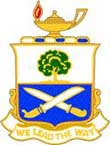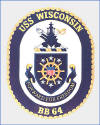Tom Hunter
Posts: 2194
Joined: 12/14/2004
Status: offline

|
Now a look at the DDs
The British had 6 DDs plus the Le Triomphant. I don't have ammo figures for the Free Frnch DD so I am just looking at the Brits.
During the suprise round HMS Voyager took 3 hits from Kuroshio, Vampire was fired on by Hatsukaze, Isis by Hayashio and Le Triomphant by Hayashio none of which scored hits.
Voyager fired back on Kuroshio in round two and hit her once. She fired in round 3 and missed, and did not fire at all in the second engagement. She fired 22 shells and got a respectable .045 % hit rate. It takes Voyager 46 seconds to fire this many shells.
Vampire did not fire at all in rounds 2 and 3 and missed Hatsukaze in the second engagement.
Vendetta fired on Natsushio in rounds 2 and 3 hitting once at 4,000 yards and once at 8,000 she fired 22 shell getting a .09% hit rate again this is a 46 second barrage for this ship.
Isis opens up on Asagumo in round 2 of the first engagement hitting 1 time at 4,000 yards. She then misses at 8,000 yards in round two and does not fire in the second engagement. This is a .02% hit rate fired over 90 seconds.
Jupiter engages Natsushio in round 2 of the first engagement hitting 3 times, she then switches fire to Nagara in round 3 hitting twice, and in the second engagement she puts 2 shells into Hagura. In total she expends 154 rounds of ammunition, it takes her 3 minutes 41 seconds to shoot this many times. Her hit % is a respectable .045.
Norman does not fire in the first engagement, in the second engagement she opens up on Hayashio firing 44 shells and hitting twice for a hit rate of .045. It takes her 61 seconds to fire these 44 shells.
Of all the ships we have looked at in these battles the DDs are closest to having the historical hit rates, in fact they may be about right. They are certainly not off by an order of magnitude. However it is likely that they are not firing enough shots, but that an argument for another day.
One other thing that is interesting is how much the battle was fought be just 6 of the 14 Royal Navy ships present. Warspite, Exter, Leander, Achilles, Newcastle and Jupiter fired 69% of the shells, though Le Troimph also fired regularly and pounded the tar out of a Japanese DD. That means the remaining 8 ships fired about 3% of the total output each. Also the amount of time it takes to fire the shells is wildly divergent. Warspite fired full broadsides for 8 minutes, or for longer if they were not full, Vendetta fired for 46 seconds but did substantial damage, Jupiter, Achilles and Exeter fired 3 minutes or more, Leader over 2 minutes and Newcastle for 90 seconds. I don’t have any evidence to prove that something is fishy here but I may get some when we delve into historical battles.
So far we have shown that BBs are completely FUBAR, failing to use their main battery when targets as big as heavy cruisers are present, something which never happened historically even down to DD sized targets and has zero justification. Cruisers do not get historical hit rates, and DDs for seem to be operating more or less correctly in terms of their hit rate but may not be firing enough.
I also have data for the second big fight between the Prince of Wales TF and this group of Japanese, and between an experimental TF I built with one BB and a lot of PT boats. More coming, and more problems to be exposed, plus a good reason to group BBs and PTs.
|
 Printable Version
Printable Version

























 New Messages
New Messages No New Messages
No New Messages Hot Topic w/ New Messages
Hot Topic w/ New Messages Hot Topic w/o New Messages
Hot Topic w/o New Messages Locked w/ New Messages
Locked w/ New Messages Locked w/o New Messages
Locked w/o New Messages Post New Thread
Post New Thread